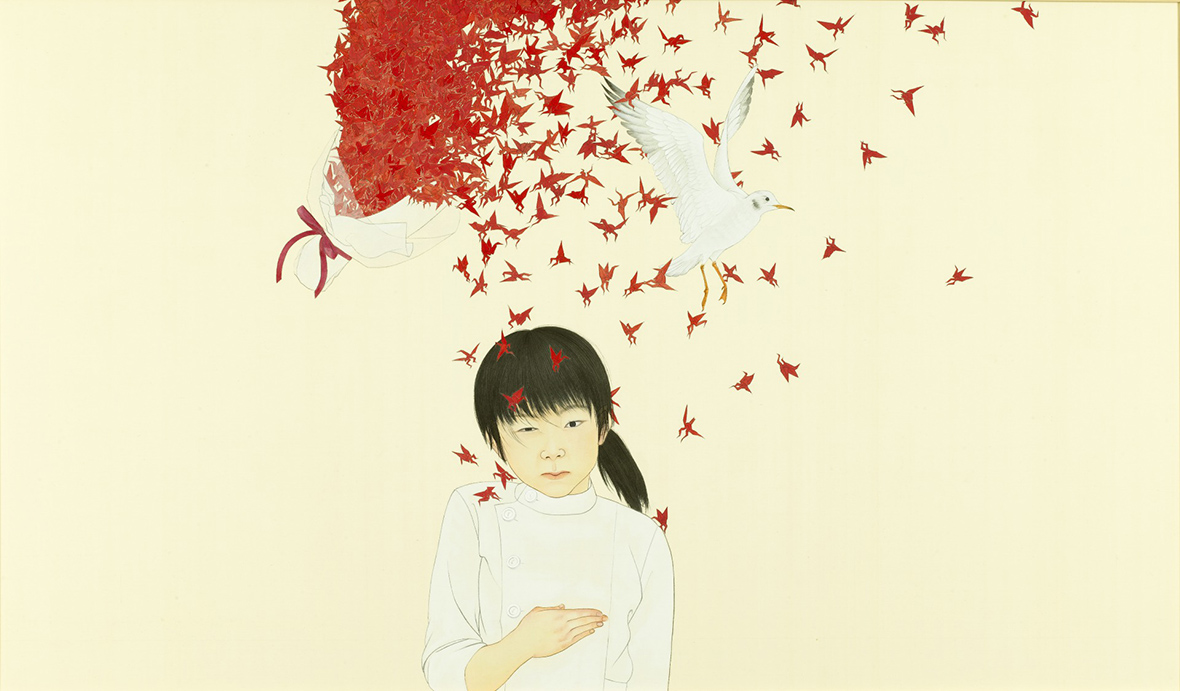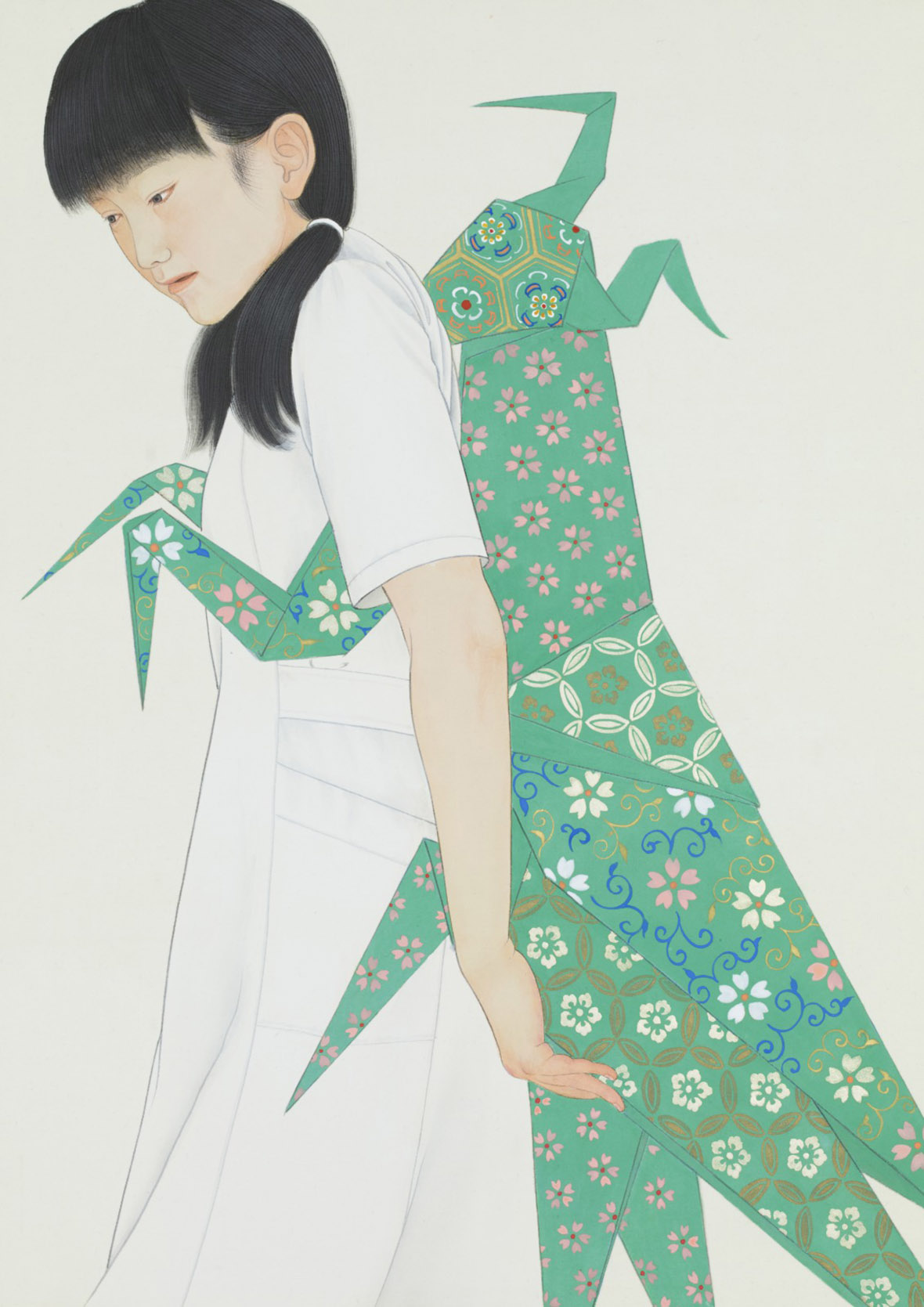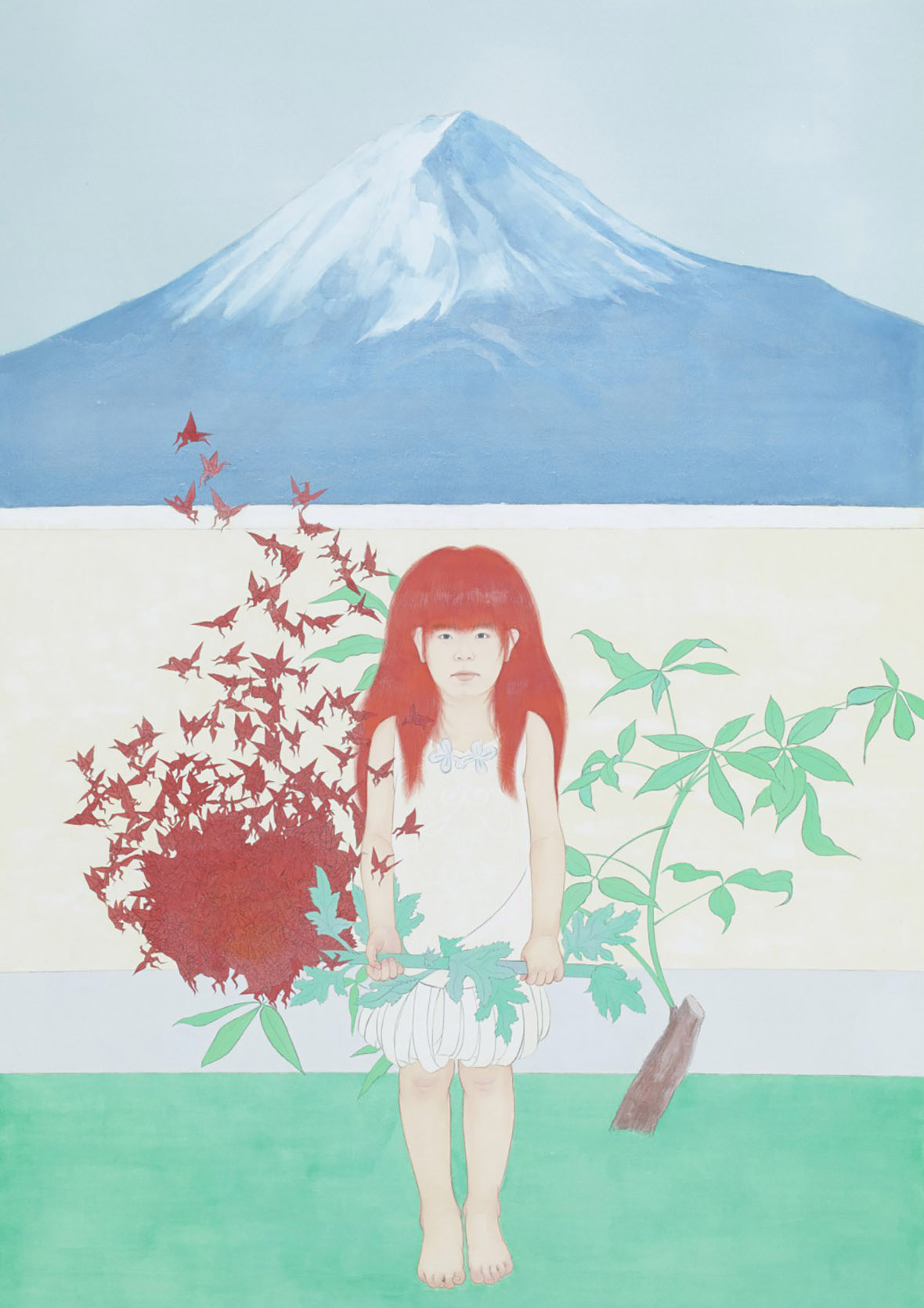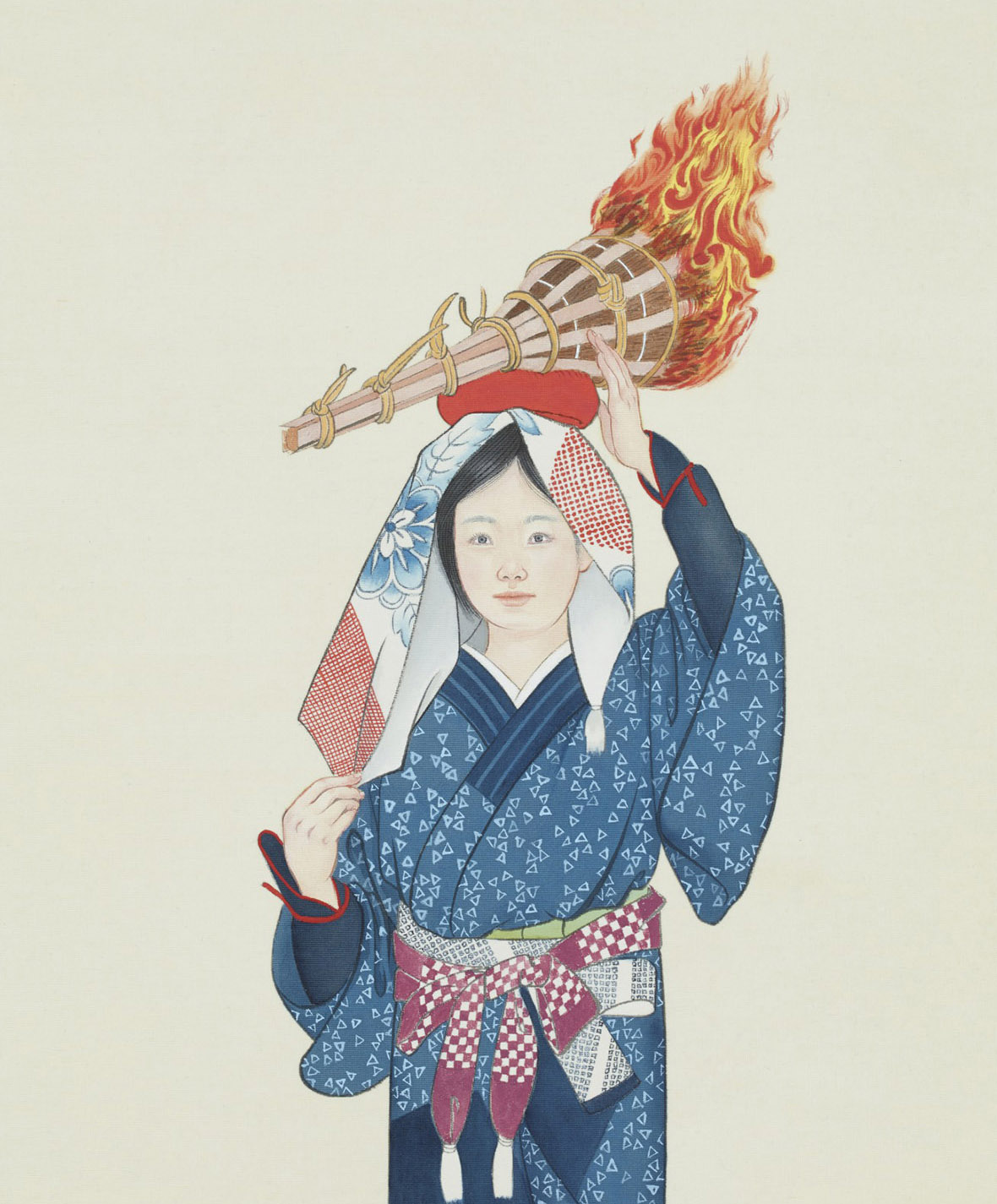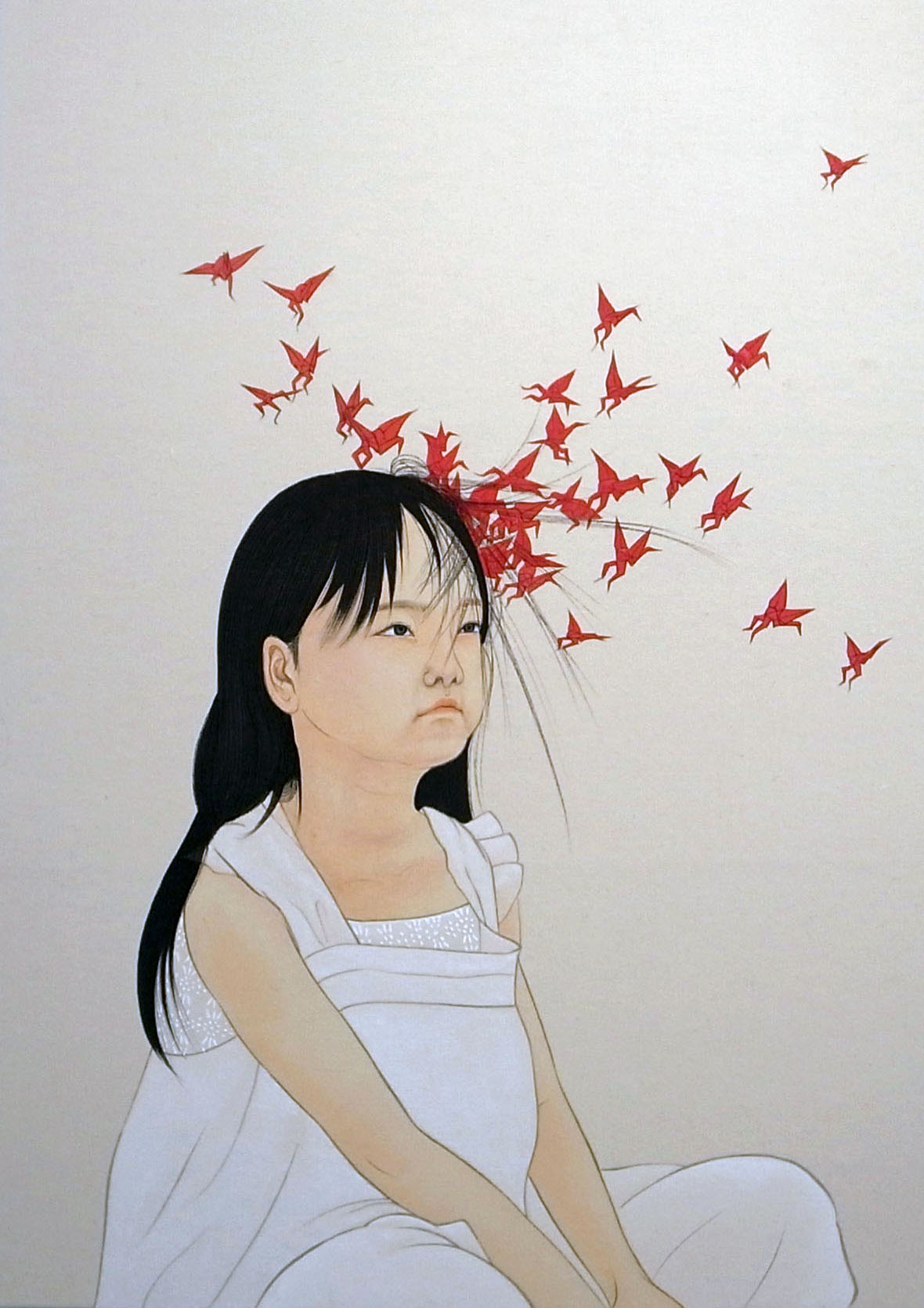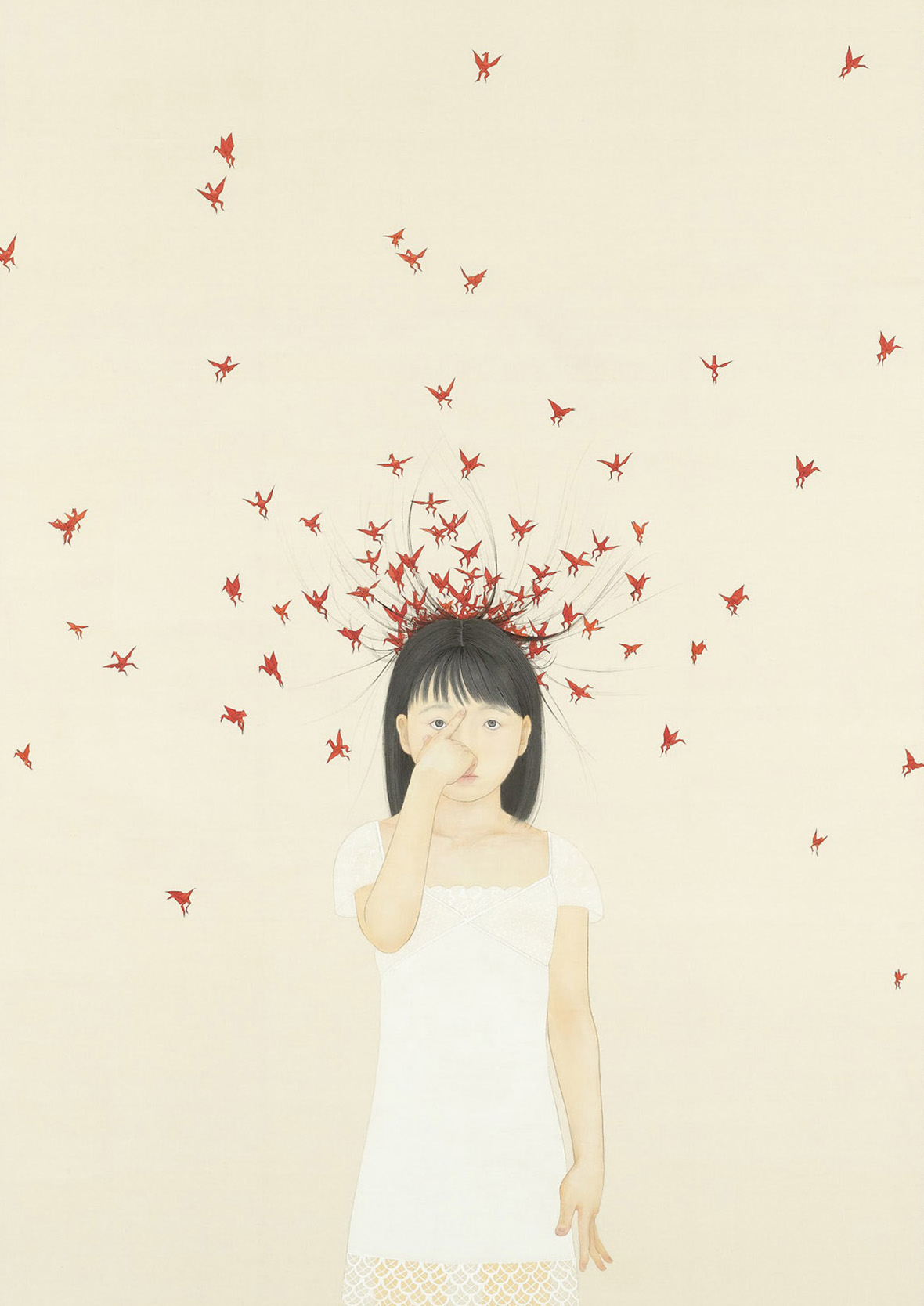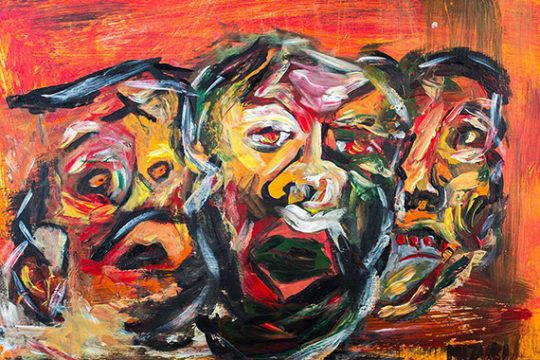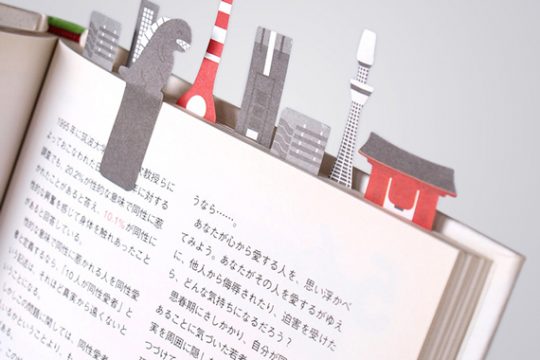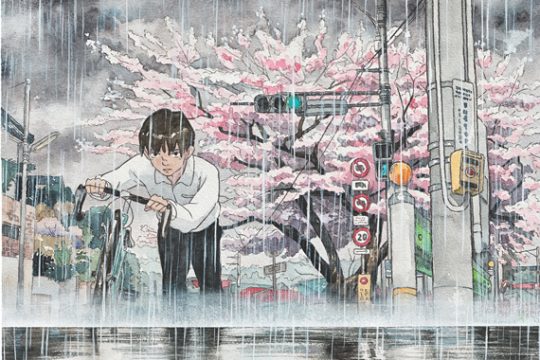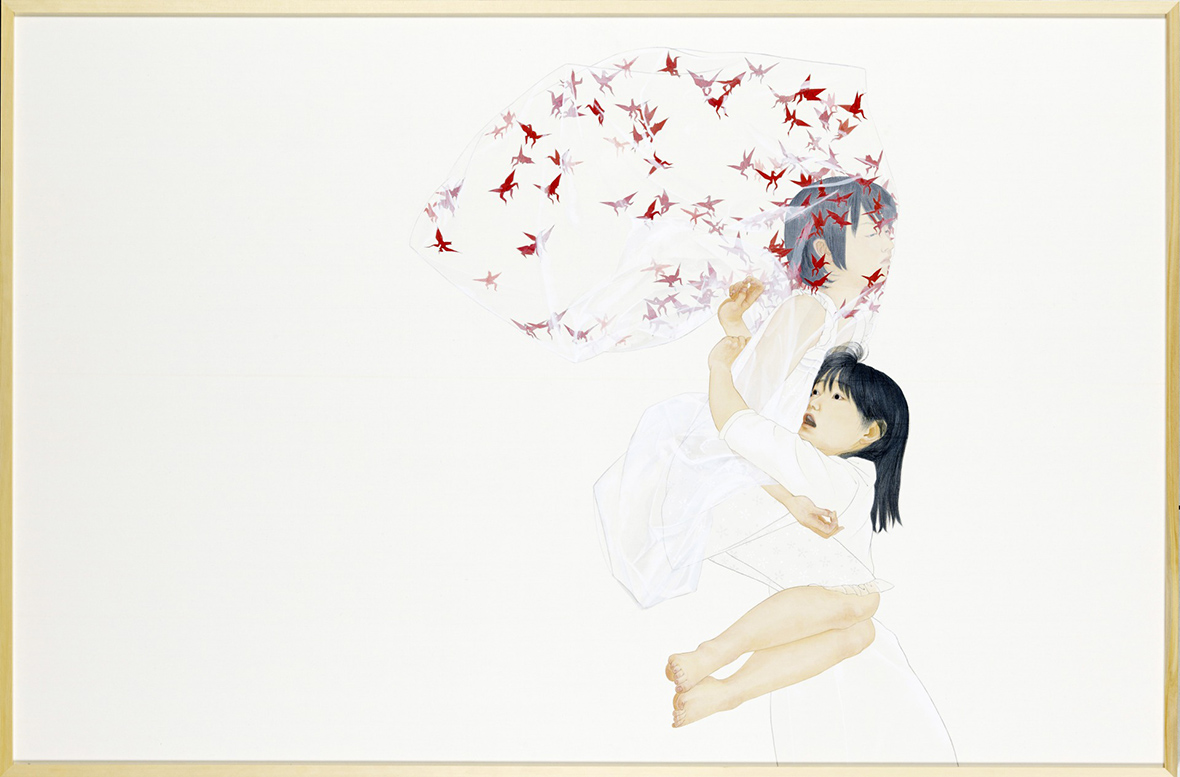
Can you pinpoint the exact moment when you became an adult?
Painter Kaori Watanabe says, for her, it was “when Japanese ginger first tasted good.”
Born in 1984 in Shizuoka, Watanabe is a graduate of the Kyoto Saga University of Arts. She creates elegant paintings of young women with flowing hair and porcelain skin in traditional Japanese kimonos. While beautiful, the body language and demeanors of Watanabe’s characters give glimpses of doubt, a silent internal struggle. But what are these characters struggling against? What are their aspirations?
哪一刻,你觉得你长大了?
“当我觉得日本姜变得好吃了。”渡边佳织(Kaori Watanabe)说。
渡边佳织于 1984 年出生于日本静冈,毕业于京都嵯峨艺术大学。她画中的少女让人印象深刻。在形象上,长发、和服、富士山、白白净净的脸庞,就像是从谷崎润一郎的《细雪》中走出来“雪子”;然而在肢体语言和面部表情上,那些沉默和倔强显得暧昧而充满意味——女孩们想要挣脱——挣脱什么?飞向什么?
When Watanabe was still a child in the 1980s and 1990s, Japan experienced severe economic turmoil.
But this period of strife led to two pivotal cultural shifts in the country.
First, it led Japanese women to begin joining the workforce en masse, furthering the cause of feminism. In 1985, the government enacted the “Gender Equality Employment Act” to protect women from gender discrimination in the workplace.
Second, it ushered in the “Golden Age” of Japanese pop culture, as people lost hope in the economy and urgently sought emotional solace and entertainment.
20 世纪八九十年代,也就是渡边佳织的少女时期,日本经历了严重的经济动荡。
但经济滑铁卢刺激了两件事情。
一件事是更多的女性主动或被动地涌入社会寻求工作,日本女性主义在那个时期得以高度发展。1985 年,日本颁布了《男女雇佣均等法》,为女性在就业中遇到的性别歧视提供法律保护。
另一件事就是促使日本流行文化行业进入“黄金期”。人们对经济不抱希望,急需在情感上得到抚慰和娱乐。
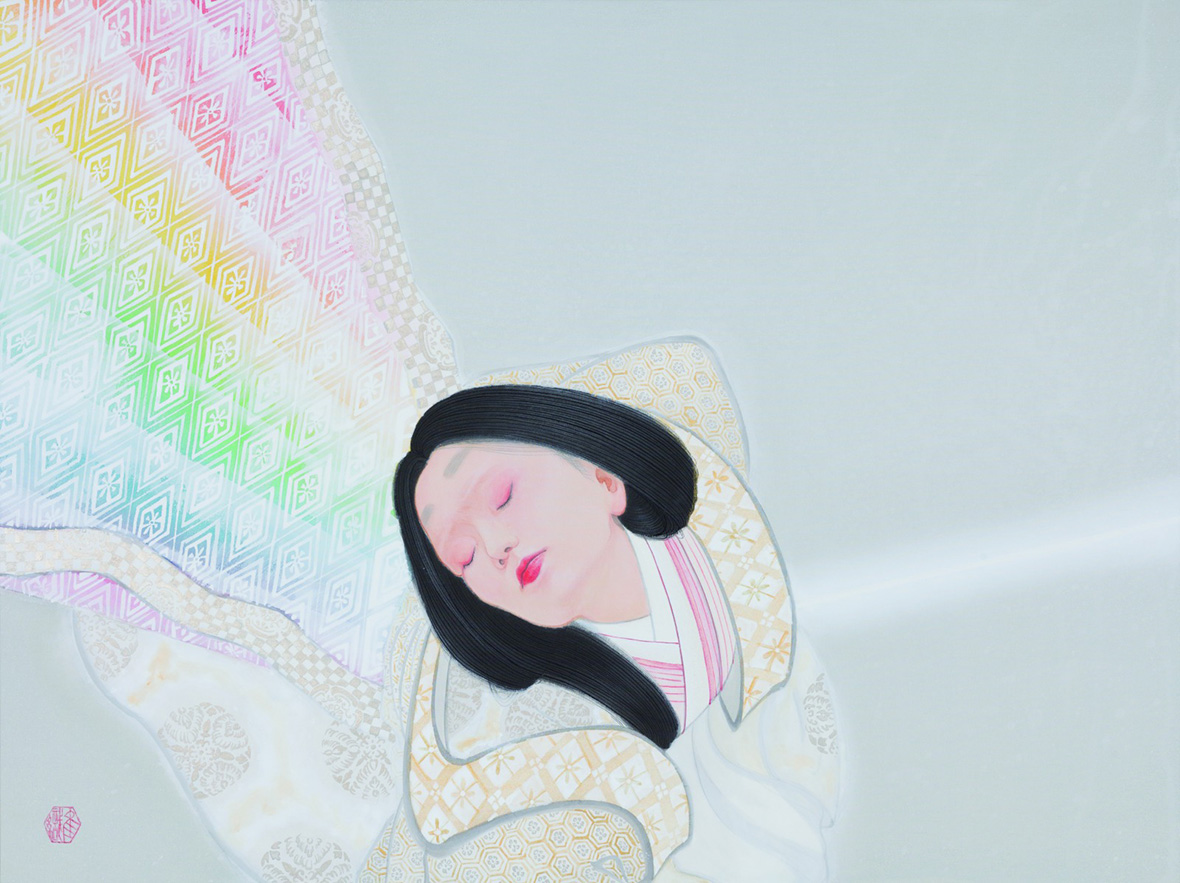
With the rise of feminism and growth of the entertainment industry, a new wave of strong female characters—both real and fictional—would emerge as iconic figures in Japanese pop culture.
As a teenager Watanabe fell in love with art and punk rock.“The three things that defined my youth were MTV, the singer Jun Togawa, and the painter Kajiwara Hisako,” she says. “After we got MTV, I became obsessed with it. I spent all my free time glued to the set. Jun Togawa was a singer in the 80s — she was totally punk. Kajiwara Hisako was a painter from Osaka who worked in a traditional Japanese style, and I was really into her work. I loved punk rock, but back then I couldn’t find anyone who wanted to form a band, so I wrote poems to express my emotions. Even today I still include small poems on some of my paintings.”
这两个方面综合起来,越来越多富有不同个性的女性偶像成为渡边佳织一代的“青春记忆”。
在渡边佳织的青少年时期,就爱上了朋克和艺术。“要说我青春期的三个关键词,就是 MTV、户川纯、梶原緋佐子 。自从我们家装上 MTV 以后,我就迷上了它,一有空就看;户川纯是 80 年代很火的一个朋克风格的创作女歌手;梶原緋佐子是我很喜欢的以日本传统风格为主的京都女画家。我很喜欢朋克乐,但那时我找不到和我一起组乐队的朋友,所以我就通过写诗来表达我的情感。现在我仍然会在一些画上写诗。”
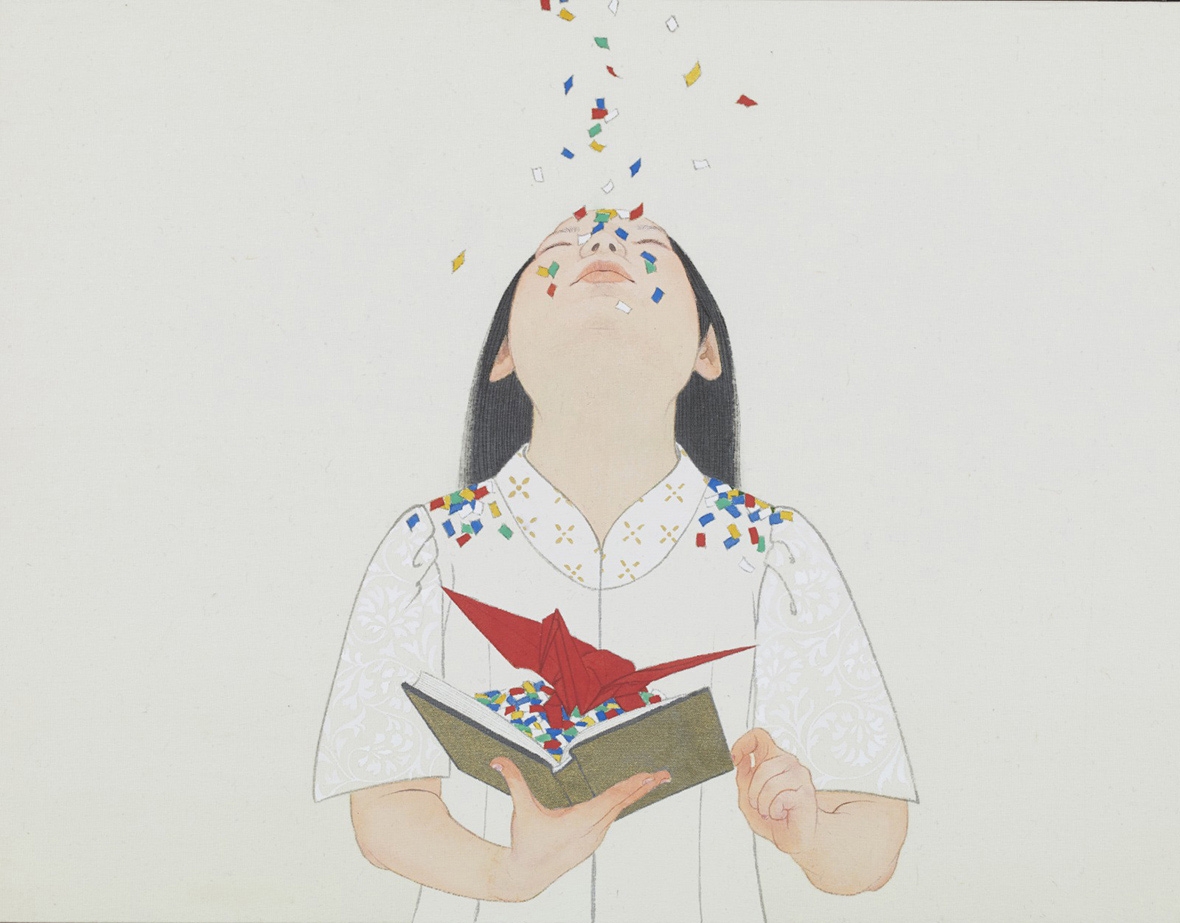
In Watanabe’s female figures, traditional symbolic forms and a rebellious, unconstrained spirit appear side by side, in a state of constant struggle. Some of her typical paintings feature Japan’s traditional “thousand paper cranes,” which give the work a sense of restlessness and anxiety—as though the cranes were the young women’s souls, flying away one after the other in their beauty and their fragility.
渡边佳织笔下的少女形象中,传统的外形符号似乎在和叛逆不羁的灵魂无休止地斗争、共处。在她的几张典型风格的作品中,日本传统文化里的“千纸鹤”元素反而为画面注入了灵动和不安的气息——仿佛是少女的灵魂,美丽、脆弱、飞翔、如影随形。
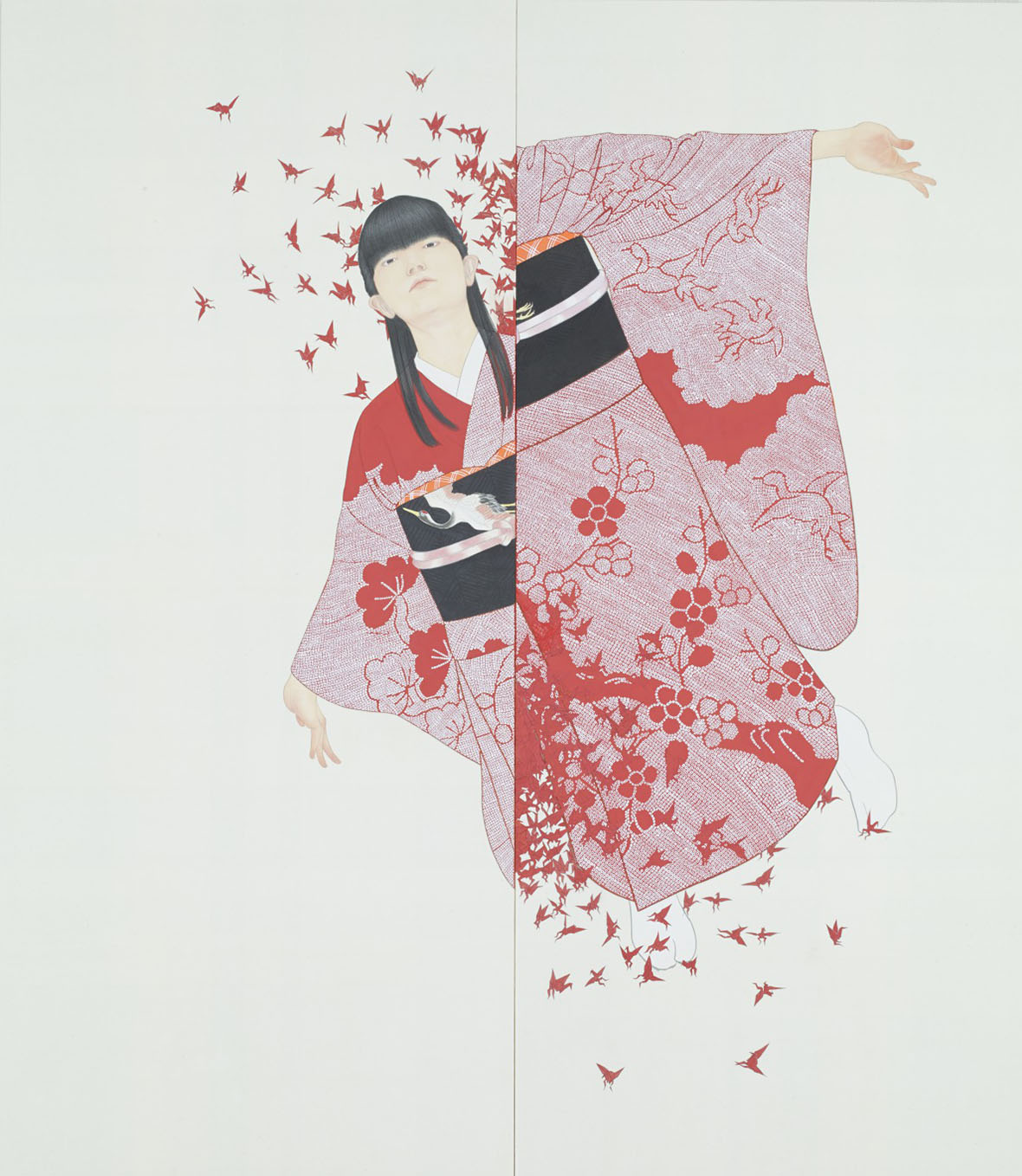
While the thousand paper cranes that populate her work are deliberate, Watanabe is unable to explain their precise meaning. “At times, I suppose they’re symbolic of certain emotions. Or maybe they’re a nod to the spirits in Japanese folk tales that can take on people’s souls, as in the novel Onmyōji: the cranes would be either shikigami, which are spirits, or shikifuda, which are paper puppets that house spirits.” By including these inanimate yet mysterious elements in her figure paintings, she blurs the lines between fiction and reality, between the ancient and the contemporary.
The friction between surface cuteness and inner rebelliousness reflects the experience of growing up as a woman in Japan. “I don’t hope for complete gender equality, but in the current situation I can still strive to live a happier and freer life,” says Watanabe. Feminist voices are making themselves heard more loudly than ever, but gender inequality is still very much present, and young women grow up in struggle and compromise. They’re expected to carry on a tradition, but the thousand paper cranes still cry out.
画上这些千纸鹤,渡边佳织当然是有用意的,却说不清明确的理由——“它象征着某种情感,亦或像是那种日本民间神话中可以摄人心魂的神灵,就像是《阴阳师》中阴阳师所役使的灵体 Shikigami,或是一种寄居在纸制人偶中的叫做 Shikifuda 的灵体。”渡边佳织将这些看起来没有生命却极具神秘感的元素融入她的人物绘画中,现实与虚构、古代与当下的界限就这样被打破了。
这种表面的乖巧与内心的反叛之间的矛盾,充斥在日本女性的成长经验中。渡边佳织说:“我可能并不寄希望于男女能完全平等,但我可以在这种情况下努力活得自由和快乐。”哪怕在当下,呼吁女性权利的声音越来越高,但不平等依然存在。少女在挣扎与妥协中成长——传统遗留在她们身上,千纸鹤却不停地鸣。
“The moment Japanese ginger first tasted good—that’s when I knew I’d grown up,” Watanabe says.
For many young women, growing up is like ginger: tangy, tart, spicy, sweet. For children, the flavor is too complex, worlds away from the straightforward sweetness of candy.
But one day you suddenly find you appreciate this complexity and can take satisfaction in the multilayered bounty life offers. Maybe that’s the moment when you grow up.
“当我觉得日本姜变得好吃了,就是我觉得自己长大了的那一刻。”
少女的成长就好像吃姜,生脆、酸甜、辛辣。对于小孩子来说,口感太复杂了,远不如一颗糖甜得那么简单喜悦。
但是有一天,你忽然发现自己能接受这复杂,从这生命赋予的丰富层次中找到自己的满足——大概这就是长大成人的那一刻。
